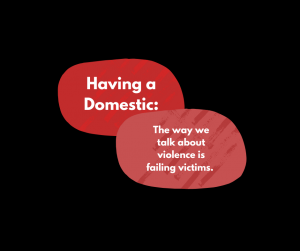 Fashion has always had a significant relationship with identity and self-expression. Personally, I love the freedom that my clothes give me with conveying who I am and the way I’m feeling. Choosing my outfits and actually getting dressed for the day is one of the things I found to miss the most while being stuck at home during self-iso. Sure, I’d read articles on how getting dressed to work from home creates the illusion of normalcy but, honestly, a lot of the time I lacked motivation to even get out of bed, let alone spend time making myself look presentable. Instead I lounged around the confines of my room, in the same sweatpants and baggy t-shirts I’d had on for three days, staring longingly at my wardrobe and wondering when my clothes would once again see the light of day.
Fashion has always had a significant relationship with identity and self-expression. Personally, I love the freedom that my clothes give me with conveying who I am and the way I’m feeling. Choosing my outfits and actually getting dressed for the day is one of the things I found to miss the most while being stuck at home during self-iso. Sure, I’d read articles on how getting dressed to work from home creates the illusion of normalcy but, honestly, a lot of the time I lacked motivation to even get out of bed, let alone spend time making myself look presentable. Instead I lounged around the confines of my room, in the same sweatpants and baggy t-shirts I’d had on for three days, staring longingly at my wardrobe and wondering when my clothes would once again see the light of day.
Weekdays and weekends began to bleed into each other, and the monotony of my outfits only added to my disoriented state, not to mention they muted my self-expression. Bored, distressed, and desperate to reconstruct my pre-COVID identity, I turned to the comforting distraction of online shopping – and it seems I wasn’t alone with this sentiment.
Exhausted by the dullness of being cooped up at home, people have become more susceptible than ever to the temptations of retail therapy. This isn’t necessarily surprising, given that shopping is a common way for people to cope with anxiety due to its indulgent and soothing nature. The heightened angst and instability felt by many during this pandemic has resulted in retailers experiencing a sudden boom in online sales, with the Australia Post reporting record days of parcel deliveries in April.
At first, I didn’t think much of it. With so much time on my hands, I would spend hours ‘window shopping’ online, scrolling mindlessly through hundreds of pages of clothes, creating outfits in my head and imagining a time when I’d be able to wear them out. My friends revealed this as being their pastime as well, telling me that if it weren’t for online shopping they’d be going insane, or joking that they had ordered 14 pairs of shoes just to have something to look forward to. But beyond the veil of light-hearted banter and boredom as an excuse, I came to realise that these actions are hard to justify.
The contemporary fashion industry is largely problematic. Although the recent growth in online shopping is a massive spike, the fact is that with the advent of fast fashion, clothing consumption has been steadily growing since the early 2000s. The increase in accessibility to affordable, stylish clothes along with the rapid cycling of fashion trends has resulted in a 60% increase in the number of garments bought each year. Simultaneously, these quick trend turnover rates encourage people to abandon items of clothing far earlier than their actual useful life. Recent studies have found that, 15 years ago, consumers kept their garments for twice as long as they do today. Now, it’s common practice for roughly a quarter of people aged 18-24 to wear an item only once before discarding it.
To support our insatiable demand, the output of clothing manufacture had more than doubled by 2015, causing the fashion industry to become one of the primary contributors of environmental pollution. Fast fashion production is now responsible for 10% of all greenhouse gas emissions and is in the top three of global water consumers. The cheap fabric of fast fashion clothing is also to blame for an estimated 35% of oceanic microplastics.
Many fashion companies have begun to introduce clothing recycling programs that allow consumers to return garments they no longer use. But despite the appealing sustainable narrative attached to these programs, the reality is that current technologies are underdeveloped and can’t reliably convert discarded fabrics into new apparel on a commercial scale. Because of this, almost two thirds of clothing garments end up in either incinerators or landfill within a year of being produced.
The treatment of workers is another problematic and unsustainable area within the industry. The production processes of many fast fashion companies involve abusive practices such as child labour, poverty wages, and health and safety violations. These conditions didn’t disappear with the emergence of the coronavirus pandemic. Rather, the context in which these issues already prevailed is now even more complex. This is because fashion manufacturing hubs predominantly exist in developing countries, where healthcare services are often inadequate and poverty is common. The economic reality of workers likely means that they can’t afford to not go to work, so their risk of becoming infected increases.
Even though fashion is important to our self-expression, the fast fashion industry has enabled this at the expense of both sustainable and ethical practices. Whilst the past few decades have seen an increase in the amount of people generally concerned with their environmental and social impact, there seems to be a significant disconnect when it comes to applying these principles to their consumption of fashion. Many people who identify as ethical consumers in other sections of their lives still take advantage of trend-led fashion that offers them the benefit of low cost, but which has a high toll on sustainability.
I know I definitely identify as one of these consumers: I’m very conscious of my influence on the planet and its future, but I’m also facing the conflict of my financial limitations while still wanting to stay trendy. I’d love to be able to buy from legitimate sustainable clothing brands instead, but these tend to be way more expensive and inaccessible to me.
So, what options do I have that better align with my values?
One way to slow down the fashion cycle and prolong the life of clothing garments is through textile reuse, which involves trading, borrowing, swapping or renting clothes. From my viewpoint as an environmentally conscious fashion consumer, this allows me to constantly update my wardrobe, facilitating my self-expression, while also reducing my contribution to the sustainability issues associated with conventional clothes shopping.
Some people may think that buying second-hand is unappealing, and I’m not necessarily suggesting that we make a drastic change to our shopping habits. What I am saying, though, is that we’re responsible for our contribution in this issue. If we slowly begin adding to our wardrobes from op-shops, neighbourhood markets, or online marketplaces rather than solely relying on retailers, we can start implementing textile reuse and minimise the effects of fast fashion by decreasing the demand for new clothing.
With the current global health crisis, it’s understandable that many of us have had our focus shifted and have pushed sustainability issues onto the back burner. But the reality is that, once the pandemic dissipates, we will still be left having to deal with these issues and we can’t afford to ignore them.
Fashion trends are cyclical; they’re constantly changing and being replaced by the next best thing. This planet is the only one we’ve got, though. There is no replacement. As ethical consumers, we need to take accountability for our actions and make educated choices with our fashion shopping habits so that we can help look after our home and protect the people living in it.







